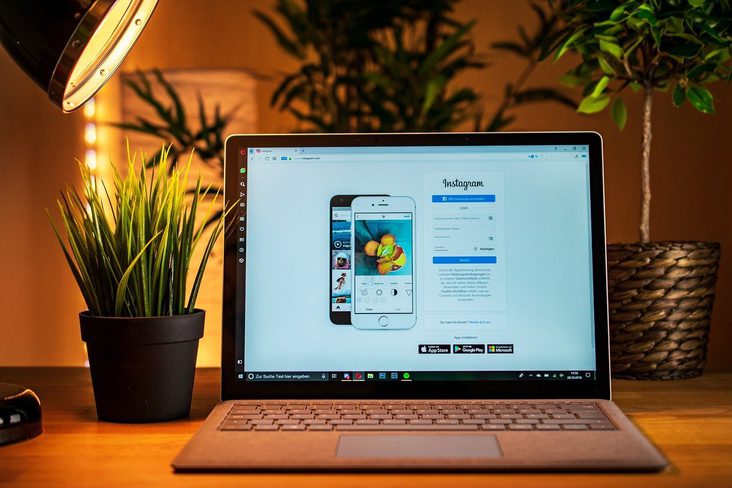Trade shows and exhibitions are a multi-billion-pound industry that gives businesses in every niche the opportunity for exposure to new customers. Events often bring people from far and wide to discover the latest developments in their industries, allowing them to be at the forefront of new technologies.
We have seen a re-emergence of the classic trade show and people worldwide are ready to get together in person again. Figures from the US indicate that the trade show industry is expected to bounce back to near pre-COVID value by 2025. Exhibiting your business is a significant undertaking, requiring all hands on deck to ensure success, but there are many great reasons to put your business out into the world again - Here is our guide for making your next exhibition successful for you and your team.
Preparing for your trade event
Create your objective
The most crucial step is the first one - creating your objective and understanding what you want to get out of your event.
Some common goals are:
- Boost your brand awareness
- Get new leads, customers or prospects
- Launch your product
Remember to be specific about your goals by setting a number to them; you may want to add 100 people to your email marketing, make 20 sales over £1000 or survey 50 people and get their feedback on your new product or prototype.
Set your budget
You want to ensure a good return on your investment and avoid being caught out with surprise costs. As a simple start to almost all events, you can expect to factor in the following:
- Your exhibition stand and venue charges
- Fit out, furniture, signage. Note that the exhibition host may require specific items only hired from their suppliers.
- Staff, they may be working overtime, weekends or you may need specialised help from outside of your company.
- Transport and accommodation. More than just planes, trains and a bed to sleep in, you may need a particular vehicle to move materials, storage and insurance.
- Promotional material, flyers, banners, catalogues, order forms and a souvenir to remind your visitors of you.
Find an event
One of the biggest challenges is finding an event right for you and your business. Of course, you want to find an event that brings in your ideal customers ready to do business.
You can use an exhibition calendar like this to discover upcoming trade events in the UK and search by industry, location or dates.
Understanding the venue
Consider your location at the event in your planning, where the traffic flow will likely be, and your visitor's spending habits.
The position of your stand plays a vital part in your success at a trade event, and sometimes, you have little control over this. Suppose the exhibition has run in the past; in that case, previous exhibitors may be given priority to select or be allocated a stand in a key location by the organiser. Consider what you might do if you are positioned far from an entrance or in an area where your customers are fatigued from a day of chatting, learning and sales pitches. Some visitors may have exhausted most or all of their purchasing budget before reaching you; how will you create another opportunity to do business with them?
It is essential to be familiar with your requirements as an exhibitor, read your agreement back to front and develop a relationship with the organisers so that all of your plans run smoothly. If the event goes well and you want to book for the following year, your relationship could mean you are offered a discount in the future and advanced access to the best stalls or partnerships.
Designing your exhibition stall
Generally, the stall's cost will depend on size and location within the venue and will be selected before booking. You will then need to decide how you want it to look and the fixtures you need to hire or purchase to make it a reality.
Consider allocating a budget for a professional interior or exhibition designer to create the space according to your brand guidelines. These professionals have the expertise and training to create interactive areas, transforming a trade show stall into a communication and sales tool. They also have relationships with suppliers who can ensure that everything is prepared, with your brand, and delivered on-site—using a professional will mean that your team's time and resources are best used where it matters the most.
Suppose you have a tight budget and want to do the task yourself. In that case, you can find fabulous inspiration from Pinterest for finished stalls, layouts, fixtures and fittings. Some event organisers or venues will make a condition of exhibiting that you use their suppliers, so ensure that you check your agreement for this and any other potential restrictions before you shop for furniture and fixtures.
Using grid paper and a scale ruler, draw a birds-eye view map of your stall area, marking and electrical or plumbing points.
Using the same scale and view on a different piece of paper, draw your shortlisted pieces of furniture and cut them out. Now, you can test your layout freely and ensure everything fits inside your stall boundaries.
Once committed to a layout, you want to ensure your team and visitors can move inside the space. If you can access a large floor area and some masking tape, create a life-size boundary of your stall on the floor and mark up the furniture with the tape. You can now walk through the area and ensure space for people to interact; you can even check if your products, collateral and equipment fit.
If you feel confident in your design, you are ready to start securing the items needed to fill the space. If your budget is between DIY and hiring a professional, you can contact local colleges that train budding interior designers. Suppose they have a student who is interested in exhibition design. In that case, there may be an opportunity to hire them and help them start their career with you. They are unlikely to have the relationships to help supply materials. Still, they will be passionate about the project, create a helpful design and may receive feedback from their lecturers on the technical aspects of their design.
Marketing collateral
You will meet prospective clients at your event who are not ready to purchase but may in the future. Ensure that your business is the first that comes to mind and that your product and team are easy to access. Here are a few physical items of collateral that you can include:
- Flyers
- Banners
- Catalogues
- Order forms
Everybody loves free stuff
A small souvenir could give you the edge over your competition and help you stick in the minds of your customers. The more valuable the item is day to day, the better. Say you're a makeup artist exhibiting at a bridal expo. Make small lipglosses with your business and contact details on the packaging; they'll use them daily and keep them in their handbags. Or perhaps your business is a small branding agency; have your team design a range of artwork that represents your style, print them onto oversized postcards with your details on the back and give them to visitors to brighten up their workspace. The great thing about postcards is that they look more fabulous than compliment slips; you can write important notes and pop a QR code to lead the customer to your website.
Remarketing
You want to collect as much information from visitors as possible but ensure they are genuinely interested in your product. Doing a giveaway during the event could entice visitors to give you their information; both those who have purchased and those yet to can have a chance to win stock, a product or service. Set your entry forms up on your website and keep a tablet handy for people to sign up. Remember to test that the data is stored correctly and that any email automation triggers.
Preparing your team for an exhibition
Trade shows, conferences and exhibitions are big, multi-billion pound businesses. In the post-COVID era, enormous competition exists for business and customers' attention.
Having a fabulous stall is one thing (and yes, it is vital), but your staff are the real champions of your event. Their participation in planning for your exhibition will prepare them for the conversations that turn visitors into long-term customers.
Involve your team from day one.
Earlier, we listed some of the objectives you can set for your event and how to make them measurable. Your team should be involved in developing these goals so that they feel committed to them. The objectives you set for your event should rely on the experiences of your team as well as data; make it part of an open brainstorm.
Embody your brand
Do some update training with your team on your brand voice, persona, values and message. Your brand is more than a visual identity; it is created to bridge the gap between a business entity and the people who are the heart and soul, both staff and customers alike. It exists for consistency and gives credibility and personality to your business.
Customer service
For many, working at an exhibition will bring back memories of working in a service-based industry like retail or hospitality; however, some of your team members may have yet to work in a customer-facing role. Don't assume everybody will naturally approach, speak or sell to customers. If your team are enjoying their time at your event, your customers will enjoy their conversations with them.
Work with your team to develop a dialogue for approaching and conversing with customers. Bring in a friend or family member to role play as a visitor and get their feedback on how much they learned about your product and connected with your staff.
Being approachable and authentic is extremely important at a trade event; this is most achievable if your team adds flair and personality to their service style. Using open-ended questions, letting the customer speak about their needs and having strong product knowledge will help conversations flow and build rapport.
External event staff
Hiring external, specialised staff for the event may be necessary. In this case, ensure that these team members are included in the team before the event, trained on your product, brand and voice, and allowed to share their expertise and experience.
Tracking their time and contribution
An industry event is unlikely to be a regular part of your team's routine; as such, they will be going above and beyond, working long or unusual hours and making personal sacrifices for the project's success. Allow them to log overtime or time off in lieu to reclaim at a later date. Don't rely on a spreadsheet for this either; you have enough on your plate. A simple and affordable solution is to use a leave management system, complete with a reliable mobile app, so that your team can log their hours and be approved with a button.

Promote your event
In the lead-up to your event, you want everyone to know that there is an opportunity to meet your team.
Email your customers to let them know about the exhibition, any products you're launching, exclusive event-only offers or any special guests you may be bringing to do a meet and greet. Remember to let them know where to find you at the venue.
Purchase tickets to the event and create a giveaway to customers or prospects to generate hype. If you know another business exhibiting, create a partnership to cross-promote, inviting them to follow your socials or subscribe to both companies' email marketing as an entry.
At the event
You're ready to get the show on the road, and your stall looks fab; the team is energised. On the day, give your staff a final run-through of how visitors will be approached and assisted, and remind them of the day's schedule and any planned demonstrations, talks or activities. Ensure they are aware of emergency exits and protocols, safety equipment, toilets, kitchen, access to drinking water and the contact details of anybody they may need. Everyone should also be aware of their break times.
Make sure you are having fun
People are far more drawn to engaging stalls; they want to see what the fuss is about. People are also more likely to avoid booths where the staff looks bored. If you can play games, have a creative activity running or continuous product testing, do it! You are likelier to sell, be memorable, and draw new people to your stall.
Activations
If you have a scheduled demonstration, workshop or Q&A during your event, ensure your visitors know what time and how to participate, especially if your stall is in a quieter area.
Post live updates on your socials
Keep your socials alive and thriving during the event. Tag the event and any other relevant people to extend your reach. If you have made friends with your neighbouring exhibitors, collaborate on some content.
Network with other business owners
This event could be one of your best future partnerships and collaboration opportunities. When your team has your space covered, go for a walk and meet your neighbours. Exchange socials and engage with their content under your business account.
Bring your customer service 'A game'
Interacting with your customers meaningfully is the key to event success. Speak to as many people as possible and learn more about them and their business, what brings them to the event and their objectives. Even people who are not your target customers may be well-connected to someone who is, so interact with a genuine interest in everybody who comes your way.
The more you listen, the better you will sell. Before you go into sales mode, your team must understand the unique problem your customer needs solved; once that is established, your team can sell your solution. Remember also that sometimes you may not be capable of solving a problem, and it is essential to be transparent about that.
Tip: Note each customer's queries and concerns from your conversations. When it comes time to follow up, you will have relevant and personalised information to share with them.
After the show
Following up with your leads after the event is an opportunity to imprint your name on the customer's memory; it also shows that you are organised and reliable. Follow up with everybody personally, recalling details from your conversation and potential solutions.
Debrief with your team about your collective experience at the event, what worked well, what could be improved in future, and what you observed from other exhibitors that you might try.
Referring back to the goals you set at the beginning of your project, keep track of your sales results and other KPIs over a short period to determine whether there was sufficient return on your investment.
The more strategically you plan your event, the more likely you will achieve a great result. Planning an exhibition is no easy task, but using the handy tips we have shared, your event will be off to a fantastic start. Your team plays a crucial role in supporting you at every stage; reward them for their hard work with a gift, experience or even some extra time off.




